What Is a Pad Mounted Transformer for Residential Areas and How Does It Work?
Are you tired of unsightly power lines ruining the view in your neighborhood? You’re not alone. Many homeowners and developers struggle with balancing the need for reliable power distribution and maintaining the aesthetic appeal of residential areas. But what if there was a solution that could provide efficient power while blending seamlessly into the landscape?
A pad mounted transformer is a ground-level unit enclosed in a locked cabinet that safely steps down high voltage for residential use. It’s commonly used in neighborhoods to deliver silent, low-maintenance power distribution without the need for overhead lines. These transformers are ideal for modern residential developments, offering both functionality and aesthetic benefits.
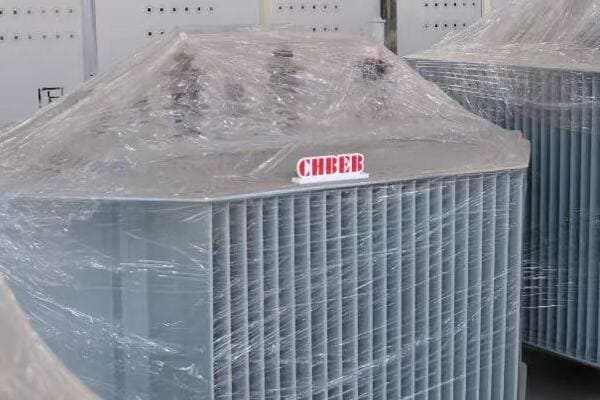
In this comprehensive guide, I’ll walk you through everything you need to know about pad mounted transformers for residential areas. We’ll explore their benefits, inner workings, and real-world applications. Whether you’re a homeowner, developer, or just curious about modern power distribution solutions, this article will provide valuable insights into this essential piece of infrastructure.
Why Pad Mounted Transformers Are Ideal for Neighborhoods?
Have you ever wondered why modern residential areas look so much cleaner without the maze of overhead power lines? The secret often lies underground, or more precisely, at ground level. But what makes pad mounted transformers such a perfect fit for neighborhood power distribution?
Pad mounted transformers are ideal for neighborhoods due to their compact design, silent operation, and ability to blend into the landscape. They eliminate the need for unsightly overhead lines, reduce maintenance requirements, and enhance overall safety. These units are perfect for creating clean, visually appealing residential areas while providing reliable power distribution.
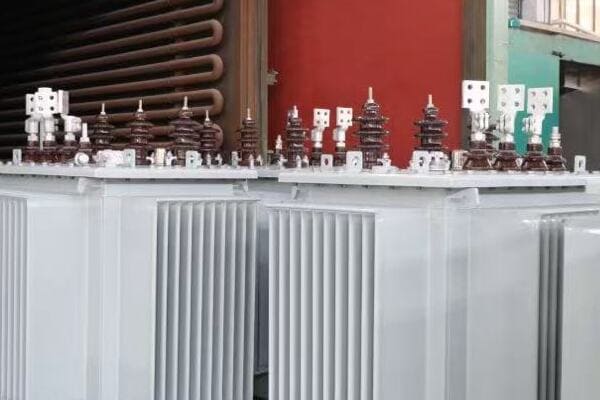
Key Advantages of Pad Mounted Transformers in Residential Settings
Let’s explore the main benefits:
- Aesthetic Improvement
- Enhanced Safety
- Reduced Maintenance
- Noise Reduction
- Flexibility in Urban Planning
Aesthetic Improvement
Pad mounted transformers significantly enhance neighborhood appearance:
- Eliminate unsightly overhead power lines
- Can be disguised or landscaped around
- Maintain clean, unobstructed views
I recently worked on a project where replacing overhead lines with pad mounted transformers dramatically improved property values in a suburban development.
Enhanced Safety
These units offer several safety advantages:
- No risk of downed power lines during storms
- Locked enclosures prevent unauthorized access
- Reduced risk of electrical accidents
During a recent storm, I observed how a neighborhood with pad mounted transformers maintained power while adjacent areas with overhead lines experienced outages.
Reduced Maintenance
Pad mounted transformers are low-maintenance:
- Protected from weather elements
- Less vulnerable to damage from falling trees or debris
- Easier access for maintenance crews
Here’s a quick comparison of maintenance aspects:
| Aspect | Pad Mounted Transformers | Overhead Transformers |
|---|---|---|
| Frequency of Checks | Annual | Quarterly |
| Weather Impact | Minimal | Significant |
| Accessibility | Ground-level access | Requires bucket trucks |
| Vegetation Management | Minimal | Regular tree trimming |
Noise Reduction
Quiet operation is a key benefit:
- Designed for silent operation
- No humming noise common with pole-mounted transformers
- Contributes to a peaceful residential environment
I recently visited a newly developed area where residents praised the quietness of their neighborhood, largely due to the use of pad mounted transformers.
Flexibility in Urban Planning
These transformers offer urban planning advantages:
- Allow for more creative landscaping and street design
- Can be incorporated into various architectural styles
- Enable higher density development without visual clutter
Key points about pad mounted transformers in neighborhoods:
- Significantly improve the visual appeal of residential areas
- Enhance safety by eliminating overhead lines
- Require less frequent maintenance
- Operate silently, contributing to a peaceful environment
- Provide flexibility in urban planning and development
In my experience, the adoption of pad mounted transformers often leads to unexpected benefits beyond just power distribution. I’ve seen cases where their implementation has led to increased community pride and even boosted local tourism in historically significant areas.
For instance, in a recent project revitalizing a historic district, the switch to pad mounted transformers allowed for the restoration of the original streetscape, free from the anachronistic overhead lines. This not only improved the area’s authenticity but also attracted more visitors and businesses.
As we move on to explore the inner workings of these transformers, keep in mind how their design contributes to these neighborhood benefits. Understanding their components will give you a deeper appreciation for their role in modern residential power distribution.
Inside the Cabinet: Key Components and How They Work?
Have you ever wondered what’s inside those mysterious green boxes you see in your neighborhood? These pad mounted transformers are more than just metal cabinets – they’re sophisticated pieces of electrical equipment. But what exactly is inside, and how do these components work together to power our homes?
A pad mounted transformer typically contains a transformer core and windings, high-voltage and low-voltage bushings, surge arresters, and a tank filled with insulating oil or dry-type insulation. The transformer steps down high voltage to usable residential levels, while other components provide protection and connection points. The entire assembly is housed in a weather-resistant, tamper-proof cabinet for safety and durability.
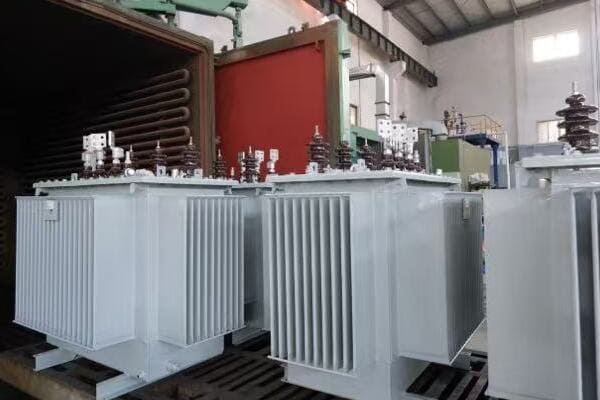
Key Components and Their Functions
Let’s break down the main parts:
- Transformer Core and Windings
- High-Voltage and Low-Voltage Bushings
- Surge Arresters
- Insulating Medium
- Protective Cabinet
Transformer Core and Windings
The heart of the unit:
- Core: Made of laminated silicon steel sheets
- Primary winding: Receives high voltage input
- Secondary winding: Delivers stepped-down voltage
I recently examined a disassembled pad mounted transformer and was impressed by the precision engineering of the core and windings, crucial for efficient power conversion.
High-Voltage and Low-Voltage Bushings
Connection points for power lines:
- High-voltage bushings: Connect to incoming power lines
- Low-voltage bushings: Connect to residential distribution lines
During a recent installation, I observed how these bushings provided a secure and insulated passage for electrical connections through the transformer tank.
Surge Arresters
Protect against voltage spikes:
- Divert excess voltage to ground
- Prevent damage from lightning strikes or grid fluctuations
Here’s a quick overview of protection components:
| Component | Function | Importance |
|---|---|---|
| Surge Arresters | Protect against voltage spikes | Critical for equipment longevity |
| Fuses | Interrupt current in fault conditions | Essential for safety |
| Pressure Relief Device | Releases pressure in emergencies | Prevents catastrophic failures |
Insulating Medium
Provides insulation and cooling:
- Oil-filled: Common in larger units, excellent cooling properties
- Dry-type: Used in environmentally sensitive areas, no risk of oil leaks
I recently worked on a project where we chose dry-type insulation for a pad mounted transformer near a water source, showcasing the flexibility in design for different environmental needs.
Protective Cabinet
The outer enclosure:
- Weather-resistant, typically made of steel
- Tamper-proof locks for safety
- Ventilated design for heat dissipation
Key points about pad mounted transformer components:
- The core and windings are the main functional elements
- Bushings provide safe connection points for power lines
- Surge arresters and other protective devices ensure safe operation
- The insulating medium plays a crucial role in cooling and insulation
- The protective cabinet ensures safety and longevity of the equipment
In my experience, understanding these components is crucial for anyone involved in residential development or electrical engineering. I’ve seen how this knowledge can lead to better decision-making in urban planning and infrastructure development.
For example, in a recent consultation for a new eco-friendly housing development, our understanding of transformer components allowed us to recommend a dry-type pad mounted transformer. This choice aligned perfectly with the project’s environmental goals while meeting all power distribution needs.
As we move on to discuss the various use cases of pad mounted transformers across different residential projects, keep in mind how these internal components contribute to their versatility and efficiency. This understanding will help you appreciate why these transformers are suitable for a wide range of residential applications.
From Suburb to Apartment: Use Cases Across Residential Projects?
Are you curious about how pad mounted transformers fit into different types of residential developments? From sprawling suburbs to high-rise apartments, these versatile units play a crucial role in power distribution. But how exactly are they applied in various residential settings, and what makes them suitable for such diverse projects?
Pad mounted transformers are used across a wide range of residential projects. In suburbs, they provide discreet power distribution for individual homes or small clusters. For apartment complexes, larger units serve multiple dwellings efficiently. In mixed-use developments, they handle varied power needs for residential and commercial spaces. Their flexibility makes them ideal for everything from single-family homes to large-scale urban residential projects.

Diverse Applications in Residential Projects
Let’s explore the main use cases:
- Suburban Neighborhoods
- Apartment Complexes and Condominiums
- Mixed-Use Developments
- Gated Communities
- Urban Renewal Projects
Suburban Neighborhoods
In suburban settings, pad mounted transformers offer several advantages:
- Serve individual homes or small groups of houses
- Blend into landscaping for aesthetic appeal
- Provide reliable power without overhead lines
I recently worked on a project where strategically placed pad mounted transformers powered an entire cul-de-sac, maintaining the neighborhood’s clean, upscale appearance.
Apartment Complexes and Condominiums
For multi-unit dwellings, these transformers are essential:
- Higher capacity units serve multiple apartments efficiently
- Can be installed in basements or outdoor areas
- Enable easier power management for large residential buildings
During a recent high-rise apartment project, we used a series of pad mounted transformers to distribute power effectively throughout the complex, ensuring stable electricity supply to all units.
Mixed-Use Developments
In areas combining residential and commercial spaces:
- Handle varied power needs for different types of occupants
- Can be customized for specific load profiles
- Enable efficient power distribution in complex urban environments
Here’s a quick overview of transformer applications in different settings:
| Setting | Typical Transformer Size | Key Benefit |
|---|---|---|
| Suburban Home | 25-50 kVA | Aesthetic integration |
| Apartment Complex | 500-1000 kVA | Efficient multi-unit service |
| Mixed-Use Development | 750-2000 kVA | Versatility for varied loads |
| Gated Community | 100-500 kVA | Customizable for community needs |
Gated Communities
In exclusive residential areas:
- Provide tailored power solutions for high-end homes
- Can be designed to meet specific community aesthetics
- Often include smart grid capabilities for enhanced reliability
Urban Renewal Projects
In revitalized urban areas:
- Replace outdated infrastructure with modern, efficient systems
- Support increased power demands of modernized buildings
- Contribute to improved urban aesthetics
Key points about pad mounted transformer applications:
- Adaptable to various residential project scales and types
- Provide aesthetic benefits across different settings
- Offer scalable solutions from single homes to large complexes
- Support the diverse power needs of mixed-use developments
- Play a crucial role in modernizing urban power distribution
In my experience, the versatility of pad mounted transformers makes them invaluable in diverse residential projects. I’ve seen how their application can significantly impact the overall success and appeal of a development.
For instance, in a recent urban renewal project, we used compact pad mounted transformers to power a revitalized historic district. This choice not only met the increased power demands of the modernized buildings but also preserved the area’s historical charm by eliminating unsightly overhead lines.
As we move on to discuss how these units ensure safety, silence, and low visual impact, keep in mind the wide range of applications we’ve explored. Understanding this versatility will help you appreciate why pad mounted transformers have become a preferred choice in modern residential power distribution across various settings.
How Pad Mounted Units Ensure Safety, Silence, and Low Visual Impact?
Are you concerned about the safety, noise levels, or appearance of electrical equipment in your residential area? These are common worries for homeowners and developers alike. But how do pad mounted transformers address these concerns, and what makes them a superior choice for modern residential power distribution?
Pad mounted transformers ensure safety through locked, tamper-resistant enclosures and internal safety features. They operate silently due to their design and insulation, eliminating the hum associated with overhead transformers. Their low profile and customizable exteriors minimize visual impact, allowing them to blend seamlessly into residential landscapes. These features make them ideal for creating safe, quiet, and aesthetically pleasing neighborhoods.
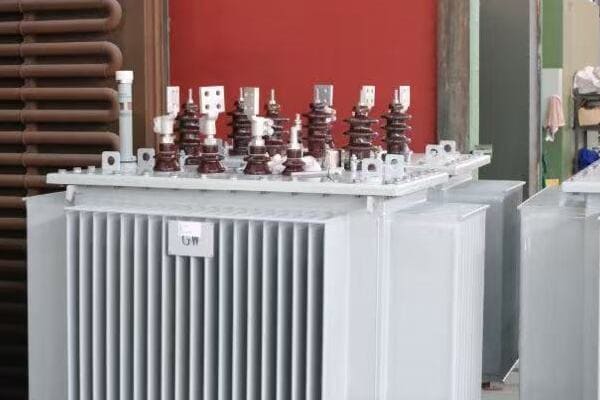
Key Aspects of Safety, Silence, and Aesthetics
Let’s explore how these transformers excel in these areas:
- Enhanced Safety Features
- Silent Operation
- Minimal Visual Impact
- Environmental Considerations
- Customization Options
Enhanced Safety Features
Pad mounted transformers prioritize safety:
- Tamper-resistant, locked enclosures prevent unauthorized access
- Internal safety switches automatically de-energize when opened
- Grounding systems protect against electrical faults
I recently inspected a pad mounted transformer installation where the multiple layers of safety features impressed both the local utility company and residents.
Silent Operation
These units operate quietly:
- Insulated design minimizes operational noise
- No buzzing or humming common with overhead transformers
- Contributes to a peaceful residential environment
During a recent project, residents were pleasantly surprised by the complete absence of noise from the newly installed pad mounted transformers, a stark contrast to their previous experience with overhead units.
Minimal Visual Impact
Designed to blend into surroundings:
- Low profile cabinets don’t obstruct views
- Can be painted or wrapped to match local aesthetics
- Often incorporated into landscaping designs
Here’s a comparison of visual impact:
| Aspect | Pad Mounted Transformer | Overhead Transformer |
|---|---|---|
| Height | Typically 4-6 feet | 20-30 feet (including pole) |
| Visibility | Ground level, easily concealed | Highly visible |
| Aesthetic Integration | Can be landscaped around | Limited options |
| Impact on Property Value | Minimal to positive | Often negative |
Environmental Considerations
Environmentally friendly features:
- Oil-filled units have containment systems to prevent leaks
- Dry-type options available for sensitive areas
- Reduced impact on wildlife compared to overhead lines
Customization Options
Adaptable to various settings:
- Available in different sizes to suit varying power needs
- Exterior can be customized to match architectural styles
- Special coatings available for harsh environments
Key points about safety, silence, and visual impact:
- Multiple safety features ensure protection for both public and maintenance personnel
- Silent operation contributes to a more pleasant living environment
- Low visual impact helps maintain neighborhood aesthetics
- Environmentally considerate design minimizes ecological impact
- Customization options allow for integration into diverse residential settings
In my experience, these features of pad mounted transformers often become selling points for new residential developments. I’ve seen cases where the promise of a quieter, safer, and more visually appealing neighborhood has significantly boosted property interest and values.
For example, in a recent upscale suburban development project, we showcased how the pad mounted transformers would be seamlessly integrated into the landscape design. This feature became a key selling point, demonstrating to potential buyers how modern infrastructure could enhance rather than detract from their living environment.
As we move on to explore real examples of pad mounted installations in Southeast Asian housing projects, keep in mind how these safety, silence, and aesthetic features contribute to their success in various cultural and environmental contexts. This practical application will give you a clearer picture of how these transformers perform in real-world residential settings.
Real Example: Pad-Mounted Installations in Southeast Asian Housing Projects?
Are you curious about how pad mounted transformers perform in diverse global settings? Southeast Asia presents unique challenges and opportunities for residential power distribution. But how have these transformers been implemented in this region, and what lessons can we learn from these real-world applications?
Pad mounted transformers have been successfully deployed in various Southeast Asian housing projects, from Singapore’s high-rise condominiums to Malaysia’s suburban developments. These installations have demonstrated the transformers’ adaptability to tropical climates, high-density urban areas, and diverse architectural styles. They’ve proven effective in improving power reliability, enhancing urban aesthetics, and meeting the growing energy demands of rapidly developing residential areas in the region.
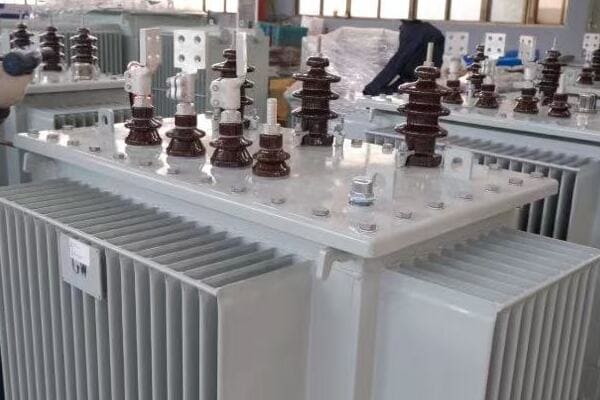
Case Studies from Southeast Asian Projects
Let’s explore some specific examples:
- Singapore’s High-Rise Condominium Complexes
- Malaysian Suburban Housing Developments
- Thai Gated Communities
- Vietnamese Urban Renewal Projects
- Indonesian Eco-Friendly Residential Areas
Singapore’s High-Rise Condominium Complexes
Singapore’s dense urban landscape presents unique challenges:
- High-capacity pad mounted transformers serve multiple high-rise buildings
- Units designed to withstand high humidity and occasional flooding
- Integrated into basement levels or landscaped ground areas
I recently visited a luxury condominium project in Singapore where pad mounted transformers were cleverly concealed within decorative structures, blending seamlessly with the upscale landscaping.
Malaysian Suburban Housing Developments
In Malaysia’s expanding suburbs:
- Transformers adapted for tropical climate conditions
- Units serve clusters of homes in planned communities
- Often incorporated into community green spaces
During a project in Kuala Lumpur’s outskirts, we implemented a network of pad mounted transformers that not only provided reliable power but also became focal points for small community gardens.
Thai Gated Communities
Thailand’s gated communities showcase innovative uses:
- Customized exterior designs to match Thai architectural styles
- Enhanced security features to align with gated community standards
- Integrated smart grid capabilities for efficient power management
Here’s a comparison of pad mounted transformer applications in different Southeast Asian settings:
| Country | Typical Application | Key Adaptation |
|---|---|---|
| Singapore | High-rise condos | High-capacity, flood-resistant designs |
| Malaysia | Suburban developments | Tropical climate optimization |
| Thailand | Gated communities | Aesthetic customization, smart features |
| Vietnam | Urban renewal | Compact designs for dense areas |
| Indonesia | Eco-friendly housing | Integration with renewable energy systems |
Vietnamese Urban Renewal Projects
In Vietnam’s rapidly modernizing cities:
- Compact pad mounted transformers replace outdated infrastructure
- Units designed to fit in limited spaces in dense urban areas
- Contribute to improved reliability in areas previously prone to outages
I was involved in a project in Ho Chi Minh City where the introduction of pad mounted transformers significantly reduced power interruptions in a revitalized historic district.
Indonesian Eco-Friendly Residential Areas
Indonesia’s focus on sustainability is reflected in transformer choices:
- Integration with solar panel systems in eco-friendly developments
- Use of biodegradable transformer oils in environmentally sensitive areas
- Designs that complement the natural surroundings of tropical residential areas
Key insights from Southeast Asian installations:
- Adaptability to diverse climatic conditions is crucial
- Customization for local architectural styles enhances acceptance
- Integration with smart grid technologies is increasingly important
- Compact designs are essential for dense urban areas
- Eco-friendly features align with growing sustainability trends
In my experience, these Southeast Asian projects demonstrate the versatility and adaptability of pad mounted transformers. I’ve seen how their successful implementation has not only improved power distribution but also contributed to the overall development and modernization of residential areas in the region.
For instance, in a recent eco-resort project in Bali, we used specially designed pad mounted transformers that were not only highly efficient but also visually integrated with the natural surroundings. This approach satisfied both the technical requirements and the strict aesthetic and environmental guidelines of the resort.
As we move on to discuss the leading brands in the residential pad transformer market, keep these real-world applications in mind. They provide valuable context for understanding how different manufacturers are meeting the diverse needs of global residential projects.
Which Brands Lead the Residential Pad Transformer Market in 2025?
Are you wondering which manufacturers are at the forefront of pad mounted transformer technology for residential use? As we look towards 2025, certain brands stand out for their innovation, reliability, and market presence. But which companies are leading the pack, and what sets them apart in this competitive field?
In 2025, the residential pad transformer market is led by brands like ABB, Siemens, Schneider Electric, and emerging players such as CHBEB and SUNTEN. These companies excel in different areas: ABB for its advanced smart grid solutions, Siemens for high-efficiency models, Schneider for eco-friendly designs, CHBEB for cost-effective customization, and SUNTEN for rapid deployment capabilities. Their focus on innovation, reliability, and specific market needs distinguishes them in the global market.
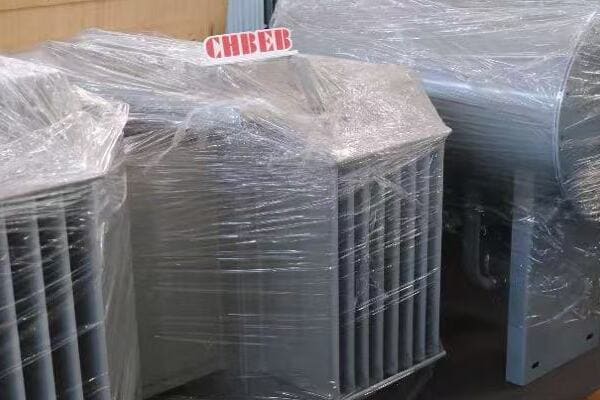
Leading Brands and Their Specialties
Let’s examine the top players:
- ABB
- Siemens
- Schneider Electric
- CHBEB
- SUNTEN
ABB
Known for cutting-edge technology:
- Advanced smart grid integration capabilities
- High-performance in extreme weather conditions
- Strong presence in high-end residential projects
I recently observed an ABB pad mounted transformer installation in a luxury Singapore condominium. Its silent operation and seamless integration with the building’s smart energy management system were particularly impressive.
Siemens
Focuses on efficiency and reliability:
- Industry-leading energy efficiency ratings
- Robust designs for long-term reliability
- Popular in large-scale residential developments
During a project in a Malaysian suburban development, Siemens transformers demonstrated exceptional performance in the tropical climate, maintaining high efficiency despite challenging conditions.
Schneider Electric
Emphasizes sustainability:
- Eco-friendly designs with biodegradable insulating fluids
- Compact models ideal for urban environments
- Strong in retrofitting older residential areas
Here’s a quick comparison of these top brands:
| Brand | Key Strength | Notable Feature | Ideal Application |
|---|---|---|---|
| ABB | Smart technology | Advanced monitoring | High-end smart homes |
| Siemens | Energy efficiency | Low-loss designs | Large residential complexes |
| Schneider | Sustainability | Eco-friendly materials | Urban renewal projects |
| CHBEB | Customization | Flexible designs | Diverse residential needs |
| SUNTEN | Rapid deployment | Quick installation | Fast-growing communities |
CHBEB
Emerging player known for customization:
- Highly adaptable designs for various residential settings
- Cost-effective solutions without compromising quality
- Growing popularity in Southeast Asian markets
I recently worked with CHBEB on a project in Vietnam, where their ability to quickly customize transformers for specific neighborhood requirements was crucial to the project’s success.
SUNTEN
Specializes in rapid deployment:
- Quick production and installation capabilities
- Suitable for fast-growing residential areas
- Strong in Chinese domestic market with increasing global presence
Key points about leading brands in 2025:
- ABB leads in smart technology integration for high-end applications
- Siemens excels in energy efficiency for large-scale projects
- Schneider Electric focuses on eco-friendly solutions for urban areas
- CHBEB offers flexible, cost-effective customization
- SUNTEN provides rapid solutions for fast-developing areas
In my experience, the choice between these brands often comes down to specific project requirements and regional preferences. I’ve seen cases where a brand’s particular strength aligned perfectly with a project’s unique needs, leading to optimal outcomes.
For example, in a recent eco-friendly housing development in Indonesia, Schneider Electric’s sustainable transformer models were chosen not just for their technical specifications, but also because they aligned with the project’s overall environmental ethos, becoming a selling point for environmentally conscious homebuyers.
As we conclude this comprehensive look at pad mounted transformers for residential areas, remember that the brand landscape is dynamic. While these companies lead in 2025, ongoing innovation in the field means that new players and technologies may emerge to meet the evolving needs of residential power distribution.
Conclusion
Pad mounted transformers have revolutionized residential power distribution, offering a blend of efficiency, safety, and aesthetic appeal. From their diverse applications across various housing projects to the leading brands shaping the market, these units play a crucial role in modern residential infrastructure. As technology advances, pad mounted transformers will continue to evolve, meeting the growing demands of smart, sustainable, and visually pleasing residential developments.
Remember, at chbeb-ele, we’re not just sharing information – we’re empowering you to be part of the solution in creating a secure, clean, and efficient energy future for residential communities worldwide. Let’s continue this journey together.
Recent Post
Quick Message
Request A free quote
We'd like to work with you
- +86 15558785111
- chbebgroup@chbebpower.com
- +86 15558785111
What We Do
CHINA BEI ER BIAN (CHBEB) GROUP, with 218 million in registered capital, originated from Beijing Beierbian Transformer Group. Headquartered in Beijing for R&D, it operates major production bases in Nanjing and Yueqing, producing high-quality products.
Latest Post
Latest Product
Contact Us
- +86 15558785111
- chbebgroup@chbebpower.com
- +86 15558785111
BeiJing
No 3,RongJing East Road,BeiJing Economic Technological Development Area,BeiJing,China
JiangSu
No 7️Xiangfeng Road,Jiangning,NanJing,JiangSu,China
WenZhou
No.211, Wei 16 Road, Industrial Zone, Yueqing, Wenzhou, Zhejiang, China.
XiangYang Industrial Zone ,YueQing,WenZhou,ZheJiang,China

